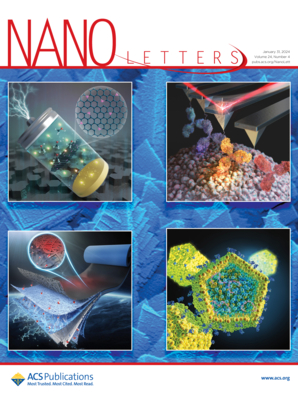Controllable Reconstruction of β-Bi2O3/Bi2O2CO3 Composite for Highly Efficient and Durable Electrochemical CO2 Conversion
IF 9.6
1区 材料科学
Q1 CHEMISTRY, MULTIDISCIPLINARY
引用次数: 0
Abstract
The uncontrollable electrochemical reduction reconstruction, leading to the destruction of well-defined structure and subsequent low durability, is the main obstacle to the catalytic performance of Bi-based composites toward electrochemical CO2 reduction reaction (eCO2RR). Herein, we address this issue through construction of a novel β-Bi2O3/Bi2O2CO3 composite, which can resist the reduction reconstruction of Bi-based materials to metallic Bi during the eCO2RR process by modulating a more alkaline microenvironment that facilitates the formation of new Bi–O bonds. The synergistic interactions and directional electron transfer between the β-Bi2O3 and Bi2O2CO3 components, together with the stable composite structure, result in its superior activity and selectivity for formate production with high faradaic efficiencies (FEs) over 94% from −0.7 to −1.1 V, and remarkable durability with maintenance of 80% FE after continuous electrocatalysis of 720 h. This work sheds new light on designing advanced high-performance nanomaterials toward eCO2RR and other practical applications.

求助全文
约1分钟内获得全文
求助全文
来源期刊

Nano Letters
工程技术-材料科学:综合
CiteScore
16.80
自引率
2.80%
发文量
1182
审稿时长
1.4 months
期刊介绍:
Nano Letters serves as a dynamic platform for promptly disseminating original results in fundamental, applied, and emerging research across all facets of nanoscience and nanotechnology. A pivotal criterion for inclusion within Nano Letters is the convergence of at least two different areas or disciplines, ensuring a rich interdisciplinary scope. The journal is dedicated to fostering exploration in diverse areas, including:
- Experimental and theoretical findings on physical, chemical, and biological phenomena at the nanoscale
- Synthesis, characterization, and processing of organic, inorganic, polymer, and hybrid nanomaterials through physical, chemical, and biological methodologies
- Modeling and simulation of synthetic, assembly, and interaction processes
- Realization of integrated nanostructures and nano-engineered devices exhibiting advanced performance
- Applications of nanoscale materials in living and environmental systems
Nano Letters is committed to advancing and showcasing groundbreaking research that intersects various domains, fostering innovation and collaboration in the ever-evolving field of nanoscience and nanotechnology.
 求助内容:
求助内容: 应助结果提醒方式:
应助结果提醒方式:


